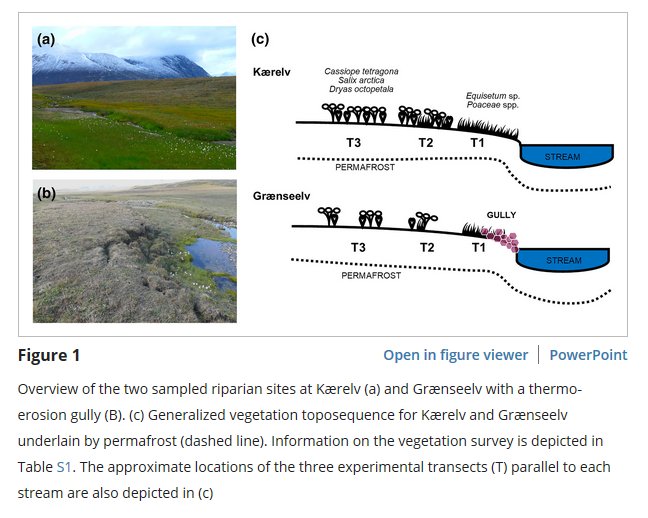Microbial carbon and nitrogen processes in high-Arctic riparian soils
New publication by Pastor, Ada; Poblador, Sílvia; Skovsholt, Louis J.; Riis, Tenna

Abstract:
The aim of this work was to assess the biogeochemical role of riparian soils in the High Arctic to determine to what extent these soils may act as sources or sinks of carbon (C) and nitrogen (N). To do so, we compared two riparian areas that varied in riparian vegetation coverage and soil physical perturbation (i.e., thermo‐erosion gully) in NE Greenland (74°N) during late summer. Microbial soil respiration (0.4–3.2 μmol CO2 m−2 s−1) was similar to values previously found across vegetation types in the same area and increased with higher temperatures, soil column depth and soil organic C degradation. Riparian soils had low nitrate concentrations (0.02–0.64 μg N‐NO3− g−1), negligible net nitrification rates and negative net N mineralization rates (−0.58 to 0.33 μg N g−1 day−1), thus indicating efficient microbial N uptake due to low N availability. We did not find any effects of physical perturbation on soil respiration or on N processing, but the dissolved fraction of organic matter in the soil was one order of magnitude lower on the disturbed site. Overall, our results suggest that riparian soils are small N sources to high‐Arctic streams and that a depleted dissolved organic C pool in disturbed soils may decrease exports to the adjacent streams under climate change projection.
First published: 10 January 2020
